Across the animal kingdom, species exist that have evolved the ability to soar through the air without achieving true self-powered flight. These animals glide. Most of these critters are arboreal, spending their lives coasting from tree to tree.
In this guide, we’ll discuss seven types of animals that glide. Read on to learn more!
1. Animals That Glide: Gliders (Petaurus spp.)
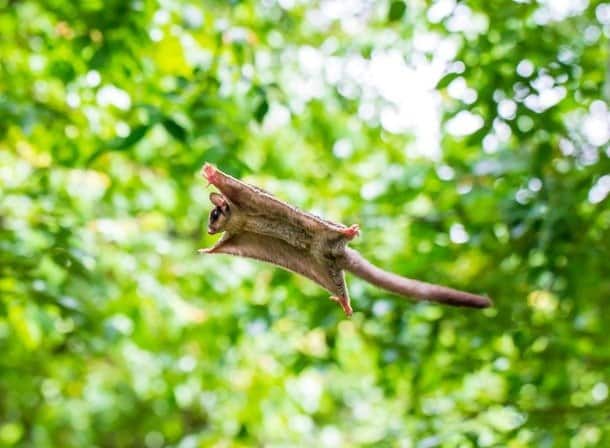
Gliders are small, nocturnal marsupials that can soar over 150 feet in a single glide.
©Anom Harya/Shutterstock.com
Several species of gliders occur across Australia, New Guinea, Tasmania, and parts of Indonesia. These small, nocturnal marsupials can coast through the air thanks to a thin flap of skin connecting the front and back legs.
When the glider jumps from a tree, they can stay aloft by outstretching their limbs, allowing the skin flap to act like a parachute. They can glide over 150 feet thanks to this adaptation. These mammals can catch flying insects and effectively evade non-flying predators by gliding through the air.
2. Flying Squirrels (Sciuridae)
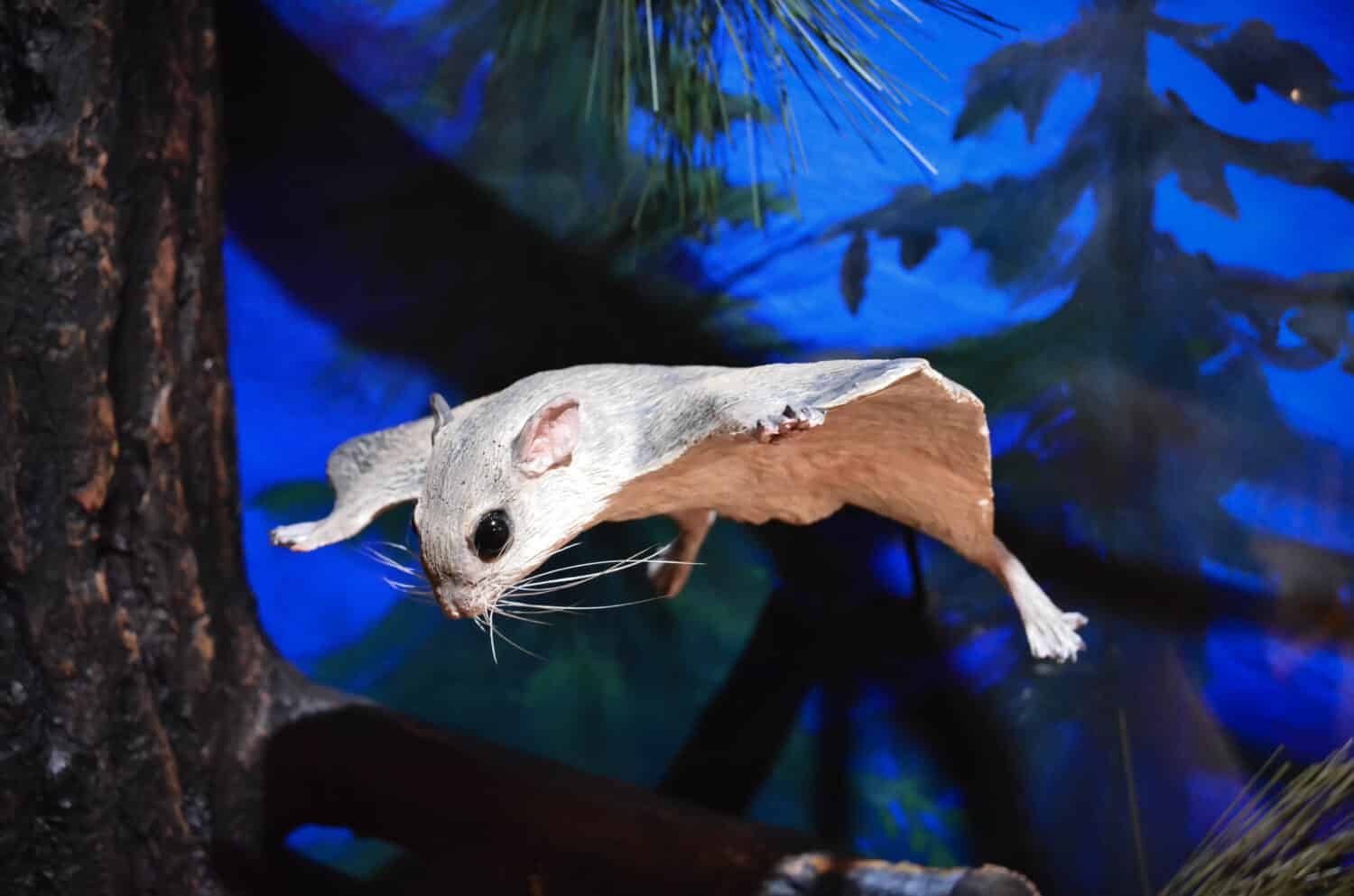
Roughly 50 species of flying squirrels exist.
©andysartworks/Shutterstock.com
About 50 species of flying squirrels exist within the broader squirrel family (Sciruidae). These species are distributed across North and Central America, Southeast and Northern Asia, Siberia, and Scandinavia.
Despite their common name, flying squirrels can’t sustain true flight. Instead, they glide via a fur-covered membrane called the patagium that connects their wrists to their ankles. Using slight adjustments of their legs to steer, flying squirrels can coast for over 150 feet in one glide.
3. Animals That Glide: Colugos (Cynocephalidae)
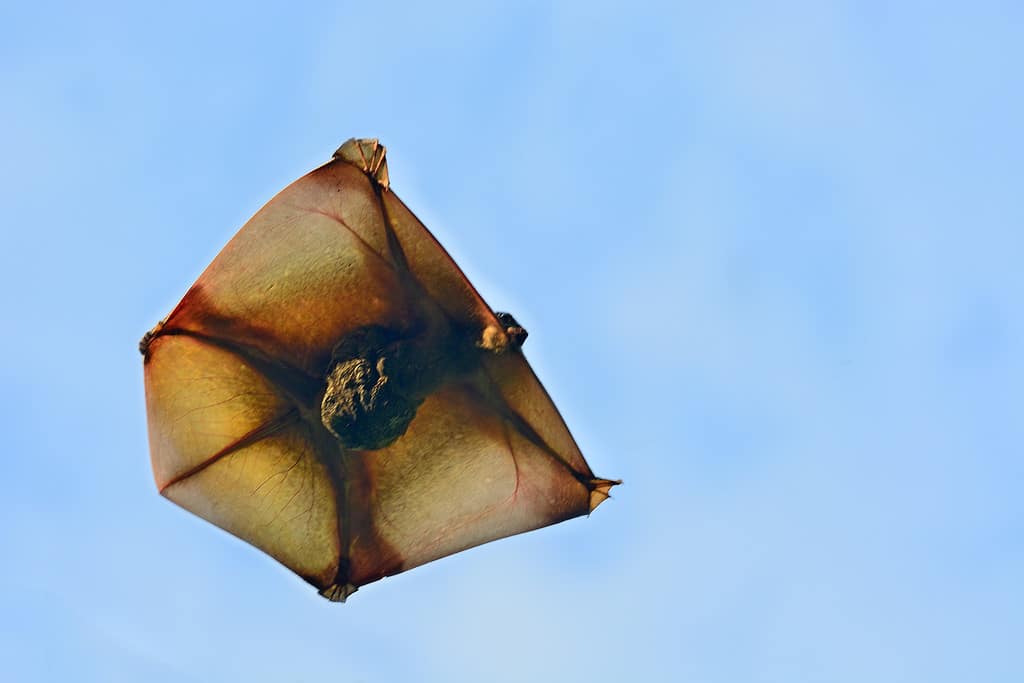
The patagium of the colugo stretches the entire length of its body, allowing for extended gliding.
©thawats/iStock via Getty Images
Also known as flying lemurs, colugos are gliding mammals that are the closest known relatives of primates. There are only two extant species of colugos, which comprise the Cynocephalidae family entirely. The Sunda colugo (Galeopterus variegatus) is native to southern Myanmar, Thailand, southern Vietnam, Malaysia, Singapore, and Indonesia. The Philippine colugo (Cynocephalus volans) occurs across the southern islands of the Philippines.
These nocturnal, arboreal mammals can glide up to 200 feet from tree to tree thanks to their membranous patagium, which stretches from the tips of its tail all the way to the fore claws.
4. Gliding Frogs (Hylidae and Rhacophridae)
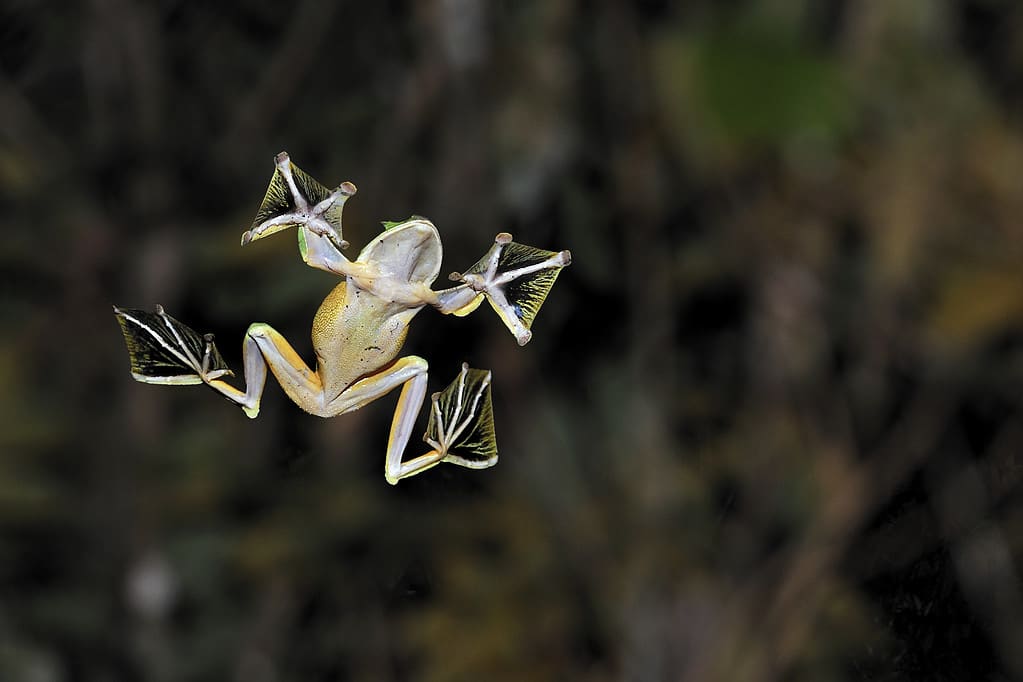
Gliding frogs can travel up to 50 feet through the air thanks to parachute-like membranous skin flaps.
©Cede Prudente/iStock via Getty Images
Incredibly, almost 400 species of gliding frogs exist in two families, Hylidae and Rhacophridae. One of the most famous of these species is Wallace’s flying frog (Rhacophorus nigropalmatus). These frogs use membranous flaps between their toes and along their sides to glide up to 50 feet through the air.
Typically, these tree-dwellers glide at a downward angle from the canopies toward ground vegetation. Depending on their location, they may achieve this in one glide or in several stages.
5. Animals That Glide: Flying Snakes (Chrysopelea spp.)
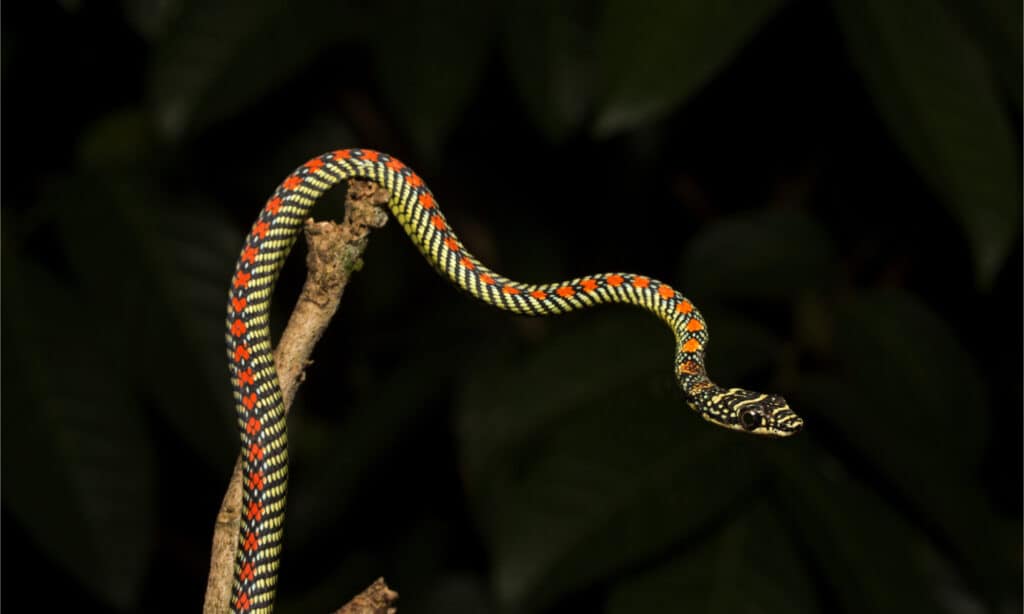
Flying snakes use mid-air undulations to stabilize their gliding.
©Vince Adam/Shutterstock.com
Five species of flying snakes exist within the Chrysopelea genus. These arboreal, brightly-colored snakes are mildly venomous via tiny, grooved rear fangs (opisthoglyphous). Flying snakes occur across South Asia and the Indonesian archipelago.
These incredible reptiles achieve the ability to glide through the air by extending their bodies to about twice the normal width and forming a concave C shape, which produces a parachute effect. As they descend, flying snakes use mid-air undulations to stabilize the gliding and increase performance. Researchers believe the evolutionary purpose of their gliding is to escape predators and move from tree to tree without having to descend to the ground or launch ambush attacks on small prey.
6. Gliding Lizards (Draco spp.)

Gliding lizards live in tropical rainforests of southern India and Southeast Asia.
©iStock.com/Jiri Hrebicek
Over 40 species of gliding lizards exist within the Draco genus in the Agamidae family. These remarkable lizards occur in tropical rainforests throughout southern India and Southeast Asia.
On gliding lizards, a thin, often colorful, patagium extends from just behind the arms to the upper portion of the back legs. The patagium is supported by five to seven markedly elongated thoracic ribs. A long-angle glide can carry them up to about 160 feet.
7. Animals That Glide: Flying Fish (Exocoetidae)

Their speed and wing-like pectoral fins allow
flying fish
to glide through the air up to an astounding 650 feet.
©Brent Barnes/Shutterstock.com
About 64 species of flying fish exist in seven genera within the Exocoetidae family. While they glide about 50 feet on average, these ray-finned fish are capable of gliding up to an incredible 650 feet. They achieve this by propelling themselves out of the water at speeds of over 35 miles per hour. Once they propel themselves into the air, their wing-like pectoral fins then allow them to sustain this forward movement. Researchers believe this ability helps them evade their many predators.
The photo featured at the top of this post is © iStock.com/neil bowman
Thank you for reading! Have some feedback for us? Contact the AZ Animals editorial team.






